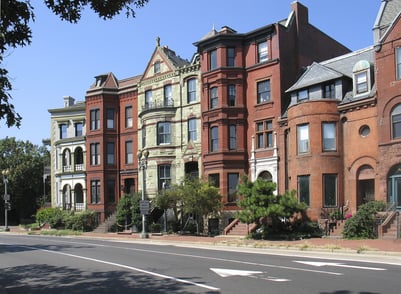 Opening a window and letting in some fresh air is a wonderful change as the summer nights cool down. But sometimes, with historic windows, it can be a bit of a challenge. They can get stuck, or not fully open. Over time, the wood and glass may look past their prime. There may also be drafts around the window, leading an owner of a historic brick home to believe the only solution is replacing the windows. It is important to remember that these functional and aesthetic concerns can be corrected, and the benefits of repairing and maintaining the original windows often outweigh replacing them.
Opening a window and letting in some fresh air is a wonderful change as the summer nights cool down. But sometimes, with historic windows, it can be a bit of a challenge. They can get stuck, or not fully open. Over time, the wood and glass may look past their prime. There may also be drafts around the window, leading an owner of a historic brick home to believe the only solution is replacing the windows. It is important to remember that these functional and aesthetic concerns can be corrected, and the benefits of repairing and maintaining the original windows often outweigh replacing them.
The Character of Your Home May Depend on the Windows
While windows aren’t always thought of as making up the home's character, they do play a large role. This is especially true for historic brick homes, as those equally historic windows are part of the overall style and appeal, both inside and out. Changing out the windows can fundamentally alter how the home looks and feels, which is one of the reasons some heritage districts have regulations around historic window repair or replacement. Working with a historic home expert before undertaking window changes is important to ensure any legal requirements are met.
Historic Window Replacements Might Not Measure Up
The original windows of a historic brick home were custom-made, most likely from old-growth wood. The custom nature makes replacement difficult, as mass-produced windows may need to be undersized and shimmed to fit. This can leave the windows out of proportion and change the entire appearance of the home. And since old-growth wood was denser and more durable, new wood windows probably won’t measure up in terms of longevity either.
Many Historic Window Components Can be Repaired
Unlike prefab modern windows, the components of your historic windows can often be repaired or replaced without the need for an entirely new window. These components include the stops, sill, stool, jamb, rails, styles and glass. Homeowners can benefit from repairing the components without undermining the historic integrity of the rest of the window.
Repairing the sills of historic windows will require brick and mortar repair. It is essential to seek out a historic brick specialist to ensure the repairs are done correctly. The traditional tuckpointing technique, along with the original lime-based mortar, is imperative for the long-term integrity of the historic brick home. Modern-day materials are just not compatible with historic brick and can actually cause further damage.
The Windows Are More Energy Efficient Than You Think
If the historic windows are drafty, there are plenty of ways to remediate the problem without resorting to window replacement. Interior or exterior storm windows can significantly reduce heat loss and gain, allowing homeowners to lower the thermostat and remain comfortable. Weatherstripping is an effective way to stop drafts, and when coupled with interior and exterior caulking, it can keep the elements out, improve efficiency, and protect your windows as well as the brick.
Repairing the Windows May be More Cost-Effective
Window replacement is expensive, and the payback in energy savings can take years. Additionally, the cost will quickly escalate if new windows need to be custom-sized. Before diving into a complete window overhaul, contact a historic home expert. They can help you determine the state of your historic windows and whether repairing them is the best option.
For questions about window repair, or other inquiries about your old brick home in D.C. or the surrounding region, contact us to arrange a consultation. We will help you find the best solution.
Tags:
Historic Windows, Repairing or Replacing Old Windows, Historic Brick Home DC, Old Brick Home in DC, Window sills, Window framesAug 15, 2024 8:00:00 AM


